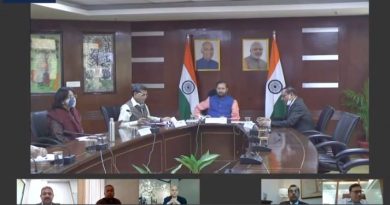Retiring Older Thermal Plants Offers Savings, Payback In 5-6 Years, Says CEEW Study
Due to the covid pandemic, power demand has been impacted, leaving renewables energy growth boxed in. Closing down old thermal plants offers a cost effective and sensible way out, reckons this study by CEEW and CEEW CEF.
 Good Distribution, Good For Renewables
Good Distribution, Good For Renewables
Close on the heels of the Central Electricity Regulator (CERC) allowing discoms to exit PPA’s with thermal power producers that are over 25 years old, comes a study outlining just how big the possibilities are. after CERC allowed discoms to consider the option in 2019, the power ministry formalised permission by specifying the option to withdraw, with the caveat that discoms would have to relinquish the full power procurement from such plants.
We saw an early result of the changes when Delhi discom BSES was allowed by the CERC to approach the power ministry for de-allocating its share of electricity supply from NTPC’s Dadri-I generating station. In BSES’s case, not only was the plant flagged for polluting the environment, but power supply at Rs 6.50 per unit was well over alternative green energy sources. As it turned out, BSES finally entered a PPA for 510 MW of solar and hybrid renewables energy at under Rs 2.50 /unit.
The study by the Council on Energy, Environment and Water-Centre for Energy Finance (CEEW-CEF) indicates that following through on the CERC’s instructions could lead to savings of RS 37,750 crores, considering the number of coal fired thermal plants that are over 25 years old and meet the criteria for decommissioning.
The report goes on to add that out of total installed capacity of 300 Gw in India , almost 35 GW of coal-based power plants are a case for decommissioning. This was based on examining 130 plants representing 95 GW of India’s coal-based capacity.
“This could result in annual savings of Rs 7,550 crore over the next five years. These savings would be generated through avoided annual capacity or fixed-charge payouts, primarily towards operation and maintenance costs. Further, the savings would add up to a total of Rs 37,750 crore,” it said. payouts to debt and equity holders at Rs 21,500 crores, could be recovered in savings over a 5-6 year period accordingly.
In a related report, CEEW says that discoms in India could save up to Rs 9,000 crore (USD 1.23 billion) each year by prioritising coal power despatch based on efficiency rather than the prevailing system which prioritises based on variable costs. This can provide much needed respite to public discoms, which last reported a loss of Rs 61,360 crore (USD 8.4 billion) in FY19.
Delhi discom BSES has already initiated the process to cancel its PPA with six more thermal power generation units namely Unchahar, Farakka, Auraiya gas, Anta, Kahalgaon and Dadri Gas power stations– all of them owned by state-owned power generator NTPC ltd.
Interestingly, even as states such as Punjab, Rajasthan, Madhya Pradesh have also applied to exit PPAs, a lot of these involve gas stations. That indicates that cost is way more important than pollution right now, as these states have some of the oldest and most polluting thermal stations, owned by their own power boards.
The report further said, that retiring 95 Gw of capacity over the coming years could cost up to Rs 3,50,000 crores to pay off debt and equity holders. Payoffs to the workforce costs could add another Rs 57,490 crore. “Freeing up capital through decommissioning will require innovative financial mechanisms. Once unlocked, these resources could be made available for India’s transition to renewables,” it said.




